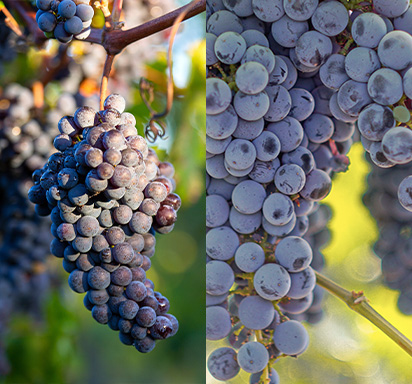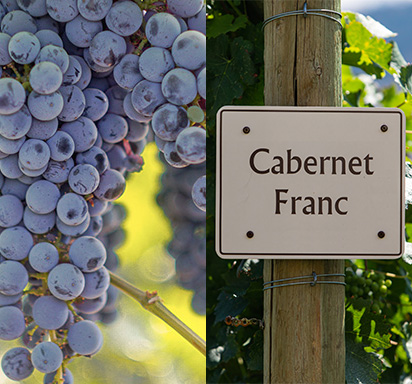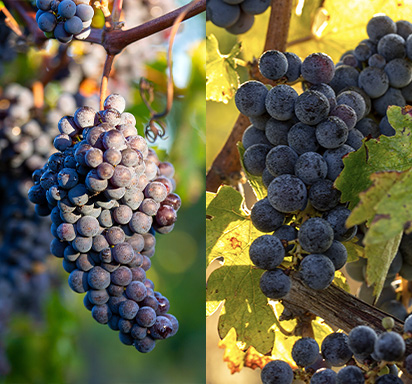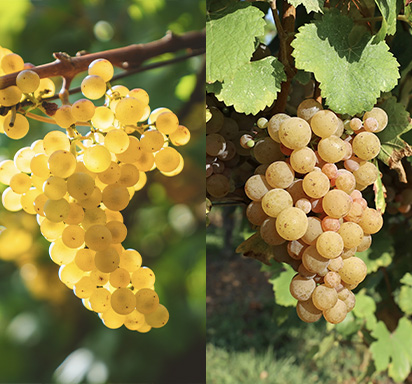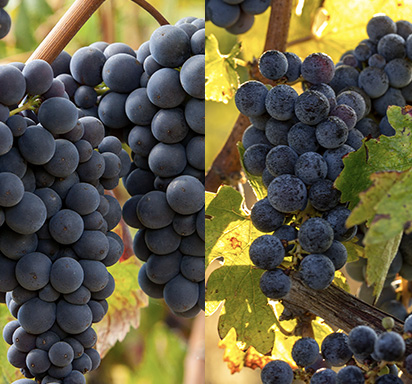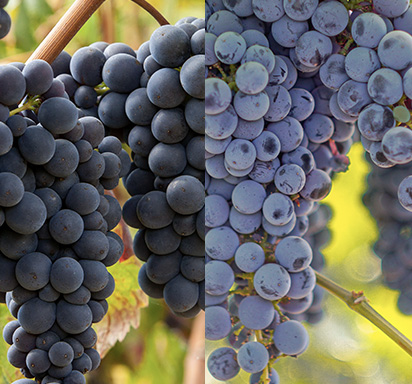Top 10 Red and White Grape Varieties You Need to Know
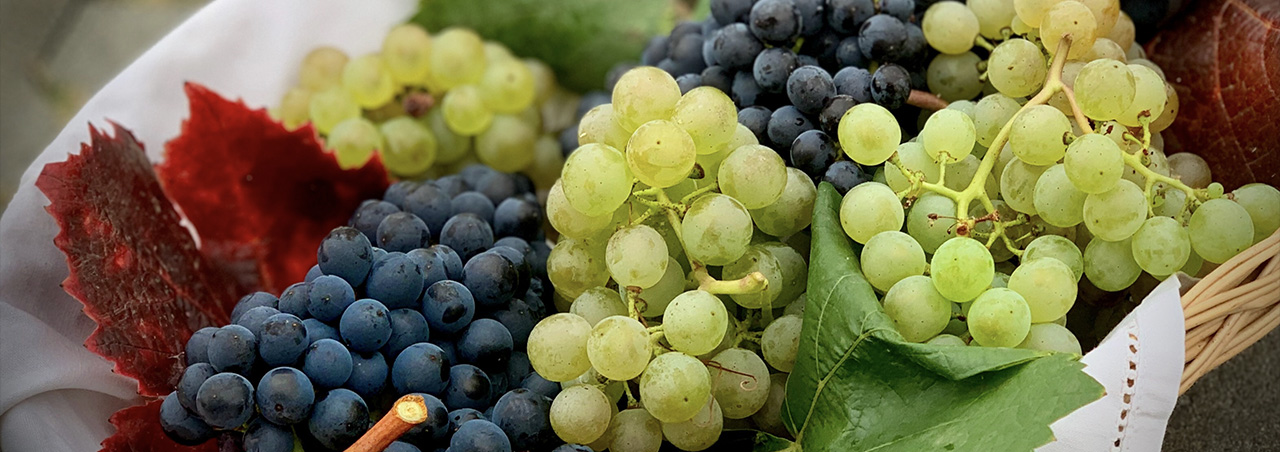
In this guide, discover the top 10 most popular red and white grape varieties. Learn more about where they are planted, what their characteristic aromas and flavors are and what makes them iconic.
Unlocking the World of Wine: Top 10 Red and White Grape Varieties You Need to Know
When it comes to the world of wine, the grape variety is a critical factor influencing the taste, aroma, and character of the final product. Whether you're a seasoned oenophile or just beginning your journey into the vineyard, understanding the top grape varieties is essential. In this article, we'll delve into the unique characteristics of the top 10 grape varieties that have made an indelible mark on the world of wine.
Embarking on a journey into the vast and enchanting world of wine is like stepping into a timeless realm where every sip tells a story of terroir, craftsmanship, and the essence of the grape itself. Throughout the world, ten grape varieties truly stand out, each contributing its unique melody to the symphony of wine. Imagine the regality of Chardonnay, a monarch among white wines, or the commanding presence of Cabernet Sauvignon, the undisputed ruler in the realm of reds. Picture the ethereal finesse of Pinot Noir, the velvety allure of Merlot, the spicy intensity of Syrah, and the harmonious blend of sweetness and acidity in Riesling. Picture also the Argentinean symphony of Malbec, the American spirit of Zinfandel, and the heart and soul of Italy encapsulated in Sangiovese. As we journey through the vineyards that cradle these grape varieties, we are transported to the sun-drenched hills of Tuscany, the expansive landscapes of Napa Valley, and the high-altitude terroirs of Argentina. Each grape variety becomes a chapter in the grand narrative of wine, contributing to a sensory experience that transcends time and place. So, here's to lifting our glasses to the extraordinary world of wine! Let's immerse ourselves in the magic of these ten remarkable grape varieties. From the initial sip to the lingering finish, this exploration promises an authentic odyssey of flavors that will weave into the fabric of your personal vinous adventure. Here's to the grapes that turn the ordinary into the extraordinary and let the authentic journey into the world of wine commence!
Chardonnay: The Queen of Whites
Chardonnay is renowned for its versatility, producing everything from crisp, unoaked wines to rich, buttery Chardonnays. Originating from Burgundy, France, Chardonnay has become a global favorite, showcasing notes of green apple, citrus, and a hint of minerality. Chardonnay stands out as the white wine grape with the broadest versatility and widespread cultivation, giving rise to full-bodied wines in diverse styles. Its cultivation is also prominent in California, extending across regions from South America to New Zealand. Defining a singular style for Chardonnay proves challenging, as much of its character is shaped by the nuances of winemaking techniques.
The influence of lees aging introduces biscuity notes, while barrel maturation imparts a blend of vanilla and spice. French Chardonnays, hailing mainly from Burgundy, exhibit subtle flavors of citrus and minerality, complemented by undertones of truffle and hazelnut. In cooler climates like Chablis and Germany, Chardonnay takes on a lean profile with pronounced minerality and the enticing aroma of green apples. Contrastingly, warmer regions such as California and Chile steer Chardonnay towards expressions rich in tropical fruits, revealing nuances of peach and pineapple. The dynamic spectrum of Chardonnay's characteristics showcases its adaptability to diverse climates and winemaking approaches.
Cabernet Sauvignon: The King of Reds
Hailing from Bordeaux, Cabernet Sauvignon is celebrated for its bold flavors, robust structure, and great aging potential. With prominent notes of blackcurrant, plum, and a touch of green bell pepper, Cabernet Sauvignon has become a benchmark for red wine enthusiasts worldwide. Opus One, Silver Oak Cellars and many other illustrious producers are also planting Cabernet Sauvignon and are showcasing different expressions of this varietal.
One of the best Cabernet Sauvignon terroirs is that of the Bordeaux region, where it is complemented by Merlot, but also by Petit Verdot, Cabernet Franc and, more rarely, Malbec and Carmenere. King of the Left Bank, Cabernet Sauvignon has contributed to elevating the reputation of the fine chateaux of the Medoc. Cabernet Sauvignon is now regarded as an international varietal and is found in various wine regions such as Napa Valley in California, where it is used to produce some of the greatest wines in the world, in Chile, in the Italian Super Tuscans blends and even more recently in China, where it has been heavily planted in recent years.
Pinot Noir: Elegance in a Glass
Known for its finesse and elegance, Pinot Noir thrives in cooler climates. This grape variety produces wines with delicate notes of cherry, strawberry, and earthy undertones. Burgundy, Oregon, and New Zealand are notable regions for exceptional Pinot Noir.
Pinot Noir, a sophisticated and fragile grape variety, thrives best in cooler climates as it tends to mature too rapidly in warmer regions, leading to a lack of balanced flavors and acidity. Its true magnificence is fully expressed in the heart of Burgundy, where the combination of a fine limestone terroir and optimal growing conditions allows it to flourish. The wines originating from the Cote de Nuits in Burgundy, encompassing Givry, Vougeot, Morey Saint Denis, Vosne-Romanee, and Gevrey-Chambertin, as well as the Corton Grand Cru from the Cote de Beaune, stand out as some of the finest Pinot Noir wines globally.
Merlot: Approachable and Velvety
Merlot's soft tannins and approachable nature make it a crowd-pleaser. Merlot offers flavors of ripe plum, black cherry, and a hint of chocolate. It is often used in blends, adding smoothness and balance.
Originating from the southwest of France, Merlot is extensively cultivated, particularly in Bordeaux, where it stands as the most prominent grape variety. While playing a secondary role to Cabernet Sauvignon on the Left Bank of Bordeaux blends, Merlot asserts itself as the predominant grape on the Right Bank, showcasing its supremacy in renowned appellations like Saint-Emilion and Pomerol. Recognized as one of the "international" grape varieties, Merlot has transcended its French roots and gained widespread popularity. It is now widely planted in various regions outside of France, including Italy, especially in Super-Tuscans, as well as in the Napa Valley of California, Argentina, Chile, and Australia.
Sauvignon Blanc: Crisp and Refreshing
Sauvignon Blanc is famous for its zesty acidity and vibrant aromatics. With origins in the Loire Valley, France, this grape variety boasts citrusy, grassy, and tropical fruit flavors. New Zealand and Marlborough, in particular, have gained global recognition for their outstanding Sauvignon Blancs.
The sophisticated terroirs in the Loire Valley stand out as some of the most iconic regions for Sauvignon Blanc production, with notable emphasis on appellations like Sancerre and Pouilly-Fumé. These areas are renowned for Sauvignon Blanc wines that boast remarkable aromatic intensity and a well-defined structure. Exhibiting a concentrated and textured mouthfeel, these wines derive their unique minerality from the limestone and flint soils of the region. While Sauvignon Blanc is commonly crafted as a single varietal wine, it can also complement other grape varieties in blends, as seen in Bordeaux, where it is often combined with Semillon and Muscadelle.
Syrah/Shiraz: Spice and Intensity
Syrah, known as Shiraz in Australia, produces wines with bold flavors, dark fruit, and a distinct peppery spiciness. This grape variety is a key player in Rhône blends and stands out in regions like the Northern Rhône, Barossa Valley, and Paso Robles. Opinions vary on the origin of Shiraz, with some attributing its roots to the Rhone Valley and others suggesting Persia. This globally popular grape variety serves as the essence of red wines in the northern Rhone Valley. Distinctive smoky aromas, such as licorice, tar, and black pepper, characterize wines from appellations like Cornas, Saint-Joseph, Crozes-Hermitage, and Hermitage. Shiraz wines are renowned for their impressive aging capabilities and unveil notes of vanilla, spices, and candied red fruits.
Riesling: A Symphony of Sweetness and Acidity
Riesling is celebrated for its versatility and wide range of styles, from bone-dry to lusciously sweet. This German grape variety offers a vibrant acidity, floral aromas, and a spectrum of fruit flavors, making it a favorite among wine enthusiasts. Producing wonderfully refreshing and intensely acidic white wines, Riesling grapes are known for their aromatic qualities and versatility in food pairings. The character of Riesling white wines can vary from dry to sweet, influenced by their origin (for example, dry in Austria, sweet in Germany and California). These wines showcase flavors of apple, orange, and nectarine, complemented by hints of honeycomb and petroleum.
Malbec: Argentina's Jewel
Originally from Bordeaux, Malbec found its true home in Argentina, where it produces bold, full-bodied wines with dark fruit flavors, velvety tannins, and a hint of smokiness. Malbec has become synonymous with Argentina's winemaking prowess. Commonly, Malbec wines present notes of dark fruits such as blackberry, plum, and black cherry. Additionally, wine lovers detect hints of violet, which contribute a floral dimension to the aromatic bouquet. Earthy and spicy undertones, reminiscent of black pepper or cocoa, can also be present, adding complexity to the overall aroma. The combination of these elements often results in a wine with a captivating and robust olfactory experience.
Zinfandel or Primitivo: From California and Puglia
Zinfandel has become an icon in American winemaking, particularly in California. Known for its bold and fruit-forward profile, Zinfandel offers flavors of blackberry, raspberry, and a hint of spice. It excels in regions like Napa Valley and Sonoma. In the contemporary wine scene, Zinfandel produces some of California's most elegant, complex, and unique wines, particularly in the form of single-vineyard and old-vine expressions. Noteworthy examples include fine Californian Zinfandels from iconic establishments such as Ridge Vineyards Lytton Springs and Turley Wine Cellars. Turning to Primitivo in Puglia, southern Italy's Manduria region yields spicy, savory, and robust wines. Primitivo wines from Italy authentically express their terroir, and many Puglian bottlings featuring this varietal have received high acclaim from wine critics.
Sangiovese: The Heart of Italy
Sangiovese, the principal grape in Chianti, is the heart and soul of Italian red wines. With flavors of cherry, plum, and earthy notes, Sangiovese reflects the diverse terroirs of Tuscany and beyond. Sangiovese stands as Italy's most extensively cultivated grape variety, used to craft medium-bodied red wines characterized by elevated acidity, prominent tannins, and considerable aging capabilities. The renowned Brunello di Montalcino, celebrated for its bold fruit profiles, is exclusively composed of 100% Sangiovese. In its youthful stage, these wines showcase notes of cherry, blackberry, and violet, evolving into nuances of candied cherry, dried fig, and leather as they mature. In the region of Umbria, Sangiovese is utilized to produce more delicate and floral wines.
Many more grape varieties to discover
With over 10,000 different grape varieties, each flourishing in specific regions worldwide, dictated by the unique combination of climate and soil characteristics. We invite you to explore the diverse world of grape varieties and embark on a journey through the terroirs, traditions, and innovations that shape the global wine landscape. Whether you prefer the elegance of Pinot Noir or the boldness of Cabernet Sauvignon, these top 10 grape varieties offer a spectrum of flavors to suit every palate. Embark on your wine adventure and savor the richness that each grape brings to your glass. Cheers to the world of wine!
You may like
Explore the key differences between Malbec and Cabernet Sauvignon — from origins and taste profiles to food pairings and top producers — to discover which red wine suits your style best.
6/16/2025Explore the key differences between Cabernet Sauvignon and Cabernet Franc—from origins and flavor profiles to winemaking roles—so you can better choose and enjoy these iconic red grapes.
6/11/2025Malbec and Merlot are two beloved red wines, each with unique flavors, tannins,& origins. Malbec offers bold, dark fruit flavors with spice, while Merlot is smoother & more approachable. Learn their differences and food pairings.
4/1/2025Chardonnay and Pinot Grigio are two beloved white wines with distinct flavors. Explore their origins, flavor profiles, body, food pairings, and more to find out which wine suits your taste and occasion best.
3/27/2025Pinot Noir and Merlot are two beloved red wines with distinct flavors, aging potential, and food pairings. Discover their key differences to help you choose the perfect bottle for any occasion.
3/5/2025Pinot Noir vs. Cabernet Sauvignon—two iconic red wines with distinct flavors, body, and food pairings. Learn about their origins, characteristics, and how to choose the perfect bottle for any occasion in this in-depth guide.
3/4/2025











